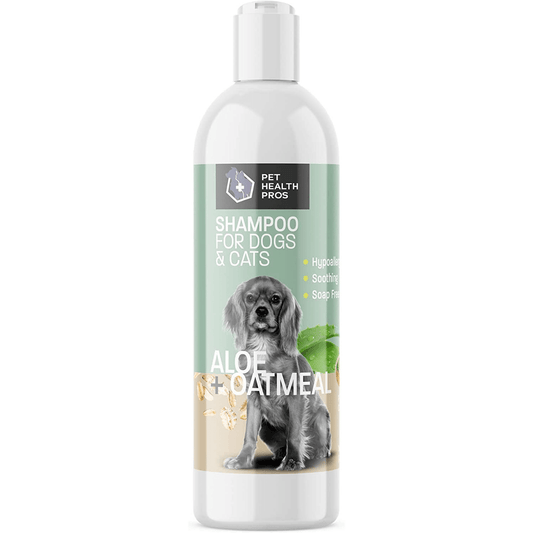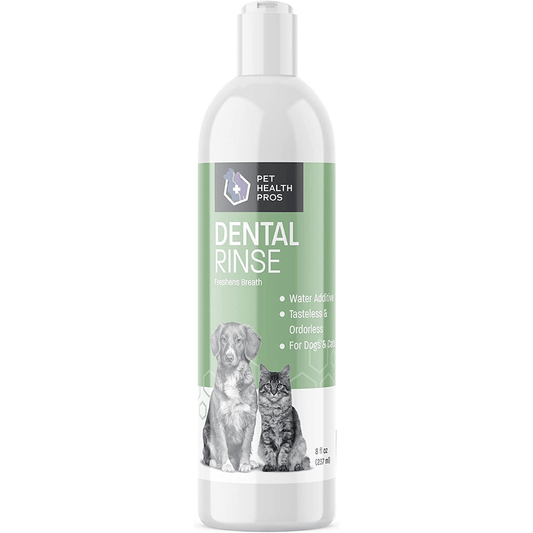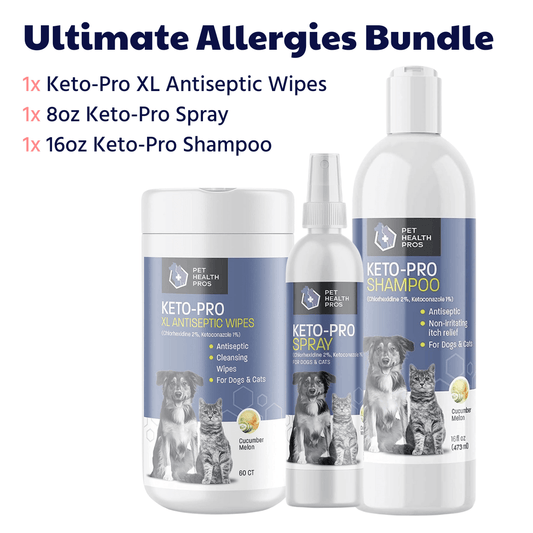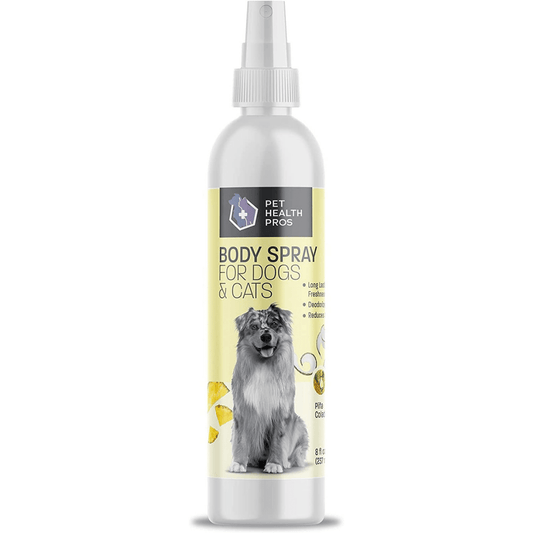Dealing with a dog's destructive chewing habits can be frustrating for pet owners. However, understanding the behavior and finding the right solutions can make a significant difference. Pet Health Pros, a U.S.-based company with over fifty years of combined experience in veterinary medicine, offers a range of dog chewing repellents that are expertly crafted to address this issue. Their products are developed in collaboration with veterinarians, using locally sourced, top-grade ingredients, and are backed by a 100% satisfaction guarantee. This article reviews the top dog chewing repellents and provides insights into how Pet Health Pros is dedicated to improving the lives of pets and their owners.
Key Takeaways
- Understanding your dog's chewing behavior is crucial to selecting an effective repellent, with factors such as stress, teething, and psychology playing a role.
- Pet Health Pros offers age-appropriate, ingredient-conscious repellents that cater to both indoor and outdoor environments, ensuring pet safety and owner peace of mind.
- The company's products are formulated by experts and promise satisfaction with quality ingredients that reflect their commitment to pet health and owner trust.
- Effective chewing prevention involves not just the application of repellents but also creating a positive environment and maintaining consistency in your approach.
- Beyond repellents, Pet Health Pros advocates for building better behaviors through training, interactive toys, and a focus on regular exercise and a healthy diet.
Understanding Your Dog's Chewing Behavior
The Psychology Behind Chewing
Understanding why dogs chew is crucial in addressing the behavior effectively. Chewing is a natural and necessary activity for dogs. It helps them keep their teeth clean and jaws strong, and it can also be a way for them to explore their environment. However, when chewing becomes excessive, it can be a sign of underlying issues such as anxiety, boredom, or lack of stimulation.
Stress and separation anxiety are common triggers for destructive chewing. Dogs may chew as a coping mechanism to relieve stress or because they miss their owners. It's important to recognize the signs of stress-related chewing and take steps to alleviate your pet's anxiety.
Puppies, in particular, chew during teething to soothe their gums. This is a normal part of their development, and providing appropriate chew toys can prevent them from turning to household items.
To help manage your dog's chewing behavior, consider the following:
- Provide plenty of chew toys and rotate them to keep your dog interested.
- Ensure your dog gets enough physical exercise and mental stimulation.
- Address any potential stressors in your dog's environment.
- Consult with a professional if chewing persists despite these measures.
Identifying Stress-Related Chewing
When your dog begins to chew excessively, it may be a manifestation of stress or anxiety. Compulsive paw chewing could be a sign of underlying issues such as depression, anxiety, or boredom. These emotional states can trigger the production of cortisol, a stress hormone, leading to destructive chewing behaviors. To identify if your dog's chewing is stress-related, observe for patterns that coincide with stressful events or changes in the environment.
Stress-related chewing can often be differentiated from other types of chewing by its intensity and frequency. Dogs may target specific objects or areas of their body, such as their paws, when they are feeling anxious. Here are some common signs that your dog's chewing may be stress-induced:
- Sudden onset of chewing in an otherwise well-behaved dog
- Chewing that occurs in the absence of the owner or during times of change
- Increased salivation or drooling while chewing
- Repetitive chewing on the same object or area
It's essential to address the root cause of stress to effectively manage and prevent stress-related chewing. Providing a stable and supportive environment, along with appropriate mental and physical stimulation, can help alleviate your dog's anxiety and reduce the need for chewing as a coping mechanism.
Puppy Teething: A Natural Process
Puppy teething is an essential developmental stage where young dogs explore their environment and soothe their gums. During this period, puppies will chew on almost anything they can find, which is why providing appropriate chew toys is crucial. These toys not only prevent your belongings from damage but also aid in the healthy development of your puppy's teeth and jaws.
Anti-chew sprays for dogs can be a helpful tool to prevent destructive chewing. However, it's important to consider the ingredients for safety and effectiveness. While these sprays create a bitter taste that deters puppies from chewing, limitations exist, and it's advisable to check local regulations regarding their use. Some recommended brands include Rocco & Roxie, Grannick's, Fooey!, and Pets Are Kids Too.
It's essential to understand that teething is a temporary phase. With patience and the right approach, you can guide your puppy through this natural process without resorting to negative reinforcement.
Choosing the Right Repellent for Your Dog
Ingredients Matter: What to Look For
When selecting a chewing repellent for your dog, the ingredients are crucial. Not all repellents are created equal, and some can contain harmful chemicals that may pose a risk to your pet's health. It's essential to look for products that use natural ingredients, which are safer for your dog and the environment.
- Bitter Apple Spray: Often recommended for its effectiveness.
- Lemon Solution: A natural bitter spray that can deter chewing.
- Citrus Solutions: Dogs typically dislike the smell of citrus.
- Hot Spices & Citronella Oil: Can be potent, but should be used cautiously.
When considering a repellent, it's not just about stopping the unwanted behavior; it's about ensuring the safety and well-being of your furry friend.
Always check the label for the presence of any artificial additives or allergens that could cause adverse reactions. A good repellent will balance efficacy with safety, providing peace of mind for the pet owner.
Age-Appropriate Solutions
When selecting a chewing repellent for your dog, it's crucial to consider their age and developmental stage. Puppies, with their teething needs, require a gentler approach compared to adult dogs. For instance, the Totally Animal Xtreme Bitter Apple Spray is an alcohol-free option that's suitable for puppies and can help deter them from chewing on inappropriate objects.
Older dogs might need stronger deterrents as their chewing is often more habitual and less about teething discomfort. It's important to choose a product that is safe yet effective for the specific age group of your pet to prevent any adverse effects.
Remember, the goal is not just to stop the unwanted behavior but to redirect it in a healthy and appropriate way.
Here's a quick guide to help you choose the right repellent:
- For puppies under 6 months: Look for alcohol-free and mild-tasting repellents.
- For adult dogs: Opt for stronger-tasting repellents that are still non-toxic.
- For senior dogs: Consider repellents that are gentle on the digestive system and easy to apply.
Repellents for Indoor vs. Outdoor Use
When selecting a chewing deterrent for your dog, it's crucial to consider the environment in which it will be used. Indoor repellents often come in the form of sprays or bitter-tasting coatings that can be applied to furniture, rugs, and other household items. These solutions are designed to be non-staining and safe for use around the home. On the other hand, outdoor repellents may include motion-activated devices or granules that can be spread around gardens and yards to prevent digging and chewing.
It's essential to prepare deterrents with repellent sprays, motion-activated devices, or natural remedies like citronella oil. Administer to your dog's food or stool carefully and monitor effectiveness for desired results.
For both indoor and outdoor applications, always read the label for proper usage instructions and safety precautions. Here's a quick checklist to ensure you're using repellents effectively:
- Identify the areas where your dog tends to chew.
- Choose a repellent that is appropriate for the material and environment.
- Apply the repellent consistently to the targeted areas.
- Monitor your dog's reaction and the effectiveness of the repellent.
- Adjust the application as needed based on your observations.
Pet Health Pros' Approach to Chewing Deterrence
Expertise-Driven Formulations
At Pet Health Pros, our approach to deterring destructive chewing behavior is rooted in expertise-driven formulations. Our products are the result of a collaborative effort between seasoned veterinarians and animal health experts, ensuring that each repellent is not only effective but also safe for your beloved pet. With over fifty years of combined experience in veterinary medicine, our team understands the intricate balance required to create a repellent that is both unappealing to dogs and harmless to their health.
Ingredients play a crucial role in the efficacy of our repellents. We use only top-grade, locally sourced materials to craft solutions that are kind to your pet and the environment. Our commitment to quality is unwavering, as we strive to cater to the evolving needs of pets and their owners.
Our promise to you is simple: satisfaction guaranteed. We stand behind our products with a 100% satisfaction guarantee, reflecting our confidence in the repellents we offer.
Choosing the right repellent is essential, and we make it easy by providing clear guidelines and support. Our customer-centric services ensure that you find the perfect solution for your pet's needs, whether they are a teething puppy or an adult dog dealing with stress-related chewing.
Quality Ingredients for Your Pet's Safety
At Pet Health Pros, we understand that the safety of your furry friend is paramount. That's why we meticulously select only the finest ingredients for our chewing deterrents. Our products are made with locally sourced, top-grade ingredients, ensuring that your pet is not exposed to any harmful chemicals.
Ingredients are the cornerstone of our formulations, and we take pride in our transparent approach to product development. Our repellents are crafted in collaboration with veterinarians, combining over fifty years of expertise in Veterinary Medicine and Animal Health Management.
We believe in the power of quality. By using superior ingredients, we not only deter unwanted chewing but also contribute to the overall well-being of your pet.
Alternatives to no chew sprays include bitter-taste sprays, distraction techniques, sound deterrents, and chew-proof toys. These options aim to deter pets from destructive chewing habits, providing a comprehensive approach to managing your dog's chewing behavior.
Satisfaction Guaranteed: Our Promise to You
At Pet Health Pros, we stand firmly behind the quality and effectiveness of our products. Our 100% satisfaction guarantee is not just a commitment; it's a reflection of our dedication to the well-being of your pets. We understand that every pet is unique, and so are their needs. That's why we offer a range of repellents tailored to suit different behaviors and environments.
When you choose Pet Health Pros, you're not just buying a product; you're gaining a partner in your pet's health journey. We're here to support you with solutions that work and service that cares.
Our customer-centric approach ensures that if you're ever dissatisfied with a purchase, we're ready to make it right. Here's what you can expect from us:
- Personalized customer service to address your concerns
- Hassle-free returns and exchanges
- Continuous product improvement based on your feedback
With over fifty years of combined experience in Veterinary Medicine and Animal Health Management, our expertise is your assurance. Incorporating no chew sprays can protect belongings and promote healthier chewing habits, and we're here to guide you through that process.
Application Tips for Effective Chewing Prevention
How to Apply Repellents Safely
Ensuring the safety of your dog while using chewing repellents is paramount. Always read the product label carefully before application to understand the correct usage and any precautions. Here are some general guidelines to follow:
- Identify the areas where your dog tends to chew and apply the repellent directly to those spots.
- Test the repellent on a small, inconspicuous area first to ensure it does not damage the surface.
- Keep your dog away from the treated area until the repellent has dried completely.
When using sprays, avoid inhaling fumes and ensure good ventilation in the application area.
Remember, the goal is not to harm your pet but to discourage unwanted behavior. If your dog shows any signs of distress or allergic reaction after the repellent is applied, discontinue use immediately and consult a veterinarian. Consistent training and positive reinforcement are essential to complement the use of repellents and achieve the best results.
Creating a Positive Environment for Your Dog
Creating a positive environment for your dog is crucial in preventing unwanted chewing behavior. Consistency in your approach is essential; dogs thrive on routine and clear expectations. Start by dog-proofing your home, removing or securing items that may tempt your dog to chew. Use positive reinforcement to reward your dog for choosing appropriate chew toys over household items.
- Establish a designated 'safe zone' for your dog that is free from chewable temptations.
- Provide a variety of chew toys to keep your dog engaged and satisfied.
- Ensure your dog has plenty of physical and mental stimulation throughout the day.
Remember, a happy and engaged dog is less likely to seek out inappropriate items to chew on. By maintaining a structured environment and providing suitable outlets for your dog's chewing instincts, you can foster a harmonious living space for both you and your pet.
Consistency is Key: Maintaining a Chew-Free Home
Maintaining a chew-free home requires consistent application of repellents and adherence to a routine that your dog can predict and understand. Consistency in your approach is essential; it helps your dog learn what is acceptable behavior and what is not.
Application of repellents should be done regularly and in conjunction with other deterrent strategies. For example, if you apply a repellent to a piece of furniture, also provide a chew toy as an appropriate alternative for your dog. This dual approach reinforces the desired behavior.
Remember, the goal is not just to stop the unwanted chewing but to redirect your dog's natural chewing instincts to appropriate items.
Here are some tips to ensure consistency:
- Establish a regular schedule for applying repellents.
- Monitor your dog's behavior and adjust the routine as needed.
- Praise and reward your dog for choosing the right items to chew.
- Keep repellents and alternative chew items easily accessible.
By following these steps, you can create a stable environment that encourages your dog to make the right choices, leading to a happier home for both you and your pet.
Beyond Repellents: Building Better Behaviors
Training Techniques to Reduce Chewing
Effective training techniques are essential in curbing your dog's unwanted chewing behavior. Positive reinforcement is key; rewarding your dog for chewing on appropriate items encourages good habits. Start by clearly marking toys that are safe for chewing and consistently reward your dog when they choose these over household items.
Consistency in training is crucial. Establish a routine that includes designated chew times and stick to it. This helps your dog understand when and what they are allowed to chew. Use commands like 'leave it' or 'drop it' to prevent unwanted chewing, and always follow through with a reward when your dog complies.
Remember, patience and persistence are vital. Training to reduce chewing doesn't happen overnight, but with time and dedication, you can guide your dog towards better behavior.
Here are some steps to incorporate into your training routine:
- Identify chew-safe toys and make them readily available.
- Use deterrent sprays on items you don't want chewed.
- Engage in regular playtime to fulfill your dog's need to chew.
- Provide plenty of physical exercise to reduce anxiety and boredom.
- Consult with a professional trainer for personalized advice.
Interactive Toys: A Healthy Alternative
Interactive toys are not just a diversion but a fundamental part of a dog's cognitive and physical development. Engaging your dog with interactive toys can significantly reduce unwanted chewing behavior by providing a constructive outlet for their energy. Toys like the Carllg Dog Chew Toys for aggressive chewers are designed to be indestructible and can withstand the rigors of play, making them an excellent investment for your pet's playtime.
When selecting interactive toys, consider the size, durability, and the type of play they encourage. Toys that are too small can be a choking hazard, while those that are too large may not be appealing to your dog.
Interactive toys also offer mental stimulation, which is crucial for a dog's well-being. Puzzle toys, for example, challenge a dog's mind and can keep them occupied for extended periods. This mental engagement is a proactive way to prevent boredom-related chewing.
Lastly, remember that variety is the spice of life for dogs as well. Rotating different types of toys can keep your dog interested and eager to play, further deterring them from chewing on inappropriate items.
The Role of Regular Exercise and Diet
Regular exercise and a balanced diet are pivotal in curbing your dog's destructive chewing habits. Exercise is essential for your dog's physical and mental well-being, helping to expend excess energy that might otherwise be directed towards chewing. A well-exercised dog is typically more relaxed and less inclined to engage in stress-related behaviors.
A nutritious diet plays a crucial role in your dog's overall health and can influence their chewing behavior. Inadequate or inappropriate nutrition may lead to increased chewing as dogs seek out missing nutrients or attempt to alleviate discomfort from dietary imbalances.
Ensuring your dog receives the right amount of exercise and a diet tailored to their specific needs can significantly reduce unwanted chewing.
Consider the following points when addressing your dog's exercise and dietary needs:
- Tailor exercise routines to your dog's age, breed, and energy level.
- Incorporate both physical activities and mental stimulation into their daily routine.
- Consult with a veterinarian to establish a balanced diet appropriate for your dog's life stage.
- Monitor your dog's response to dietary changes and adjust as necessary for optimal health.
While repellents can offer a temporary solution to unwanted behaviors, true change comes from building better habits. Our comprehensive guide on 'Beyond Repellents: Building Better Behaviors' provides actionable insights and strategies to foster positive behavior patterns. Don't let temporary fixes be your only solution. Visit our website now to access the full guide and start your journey towards lasting change.
Conclusion
In conclusion, finding the right chewing repellent for your dog is crucial to prevent destructive behavior and ensure the safety of your belongings. Throughout this article, we've explored various options, highlighting their effectiveness, ingredients, and ease of use. Remember that consistency and proper training go hand in hand with these repellents to achieve the best results. As responsible pet owners, it's our duty to provide a safe and nurturing environment for our furry friends, and choosing the right repellent is a step in the right direction. We encourage you to consider the products reviewed, keeping in mind your dog's specific needs and preferences, to foster a harmonious living space for both you and your pet.
Frequently Asked Questions
What are Pet Health Pros' key principles in creating dog chewing repellents?
Pet Health Pros adheres to expertise-driven formulations, using quality, locally sourced ingredients. Products are crafted in collaboration with veterinarians to ensure they're safe and effective for pets.
Is there a satisfaction guarantee with Pet Health Pros products?
Yes, Pet Health Pros stands behind their products with a 100% satisfaction guarantee, reflecting their commitment to the well-being of pets and the peace of mind of pet owners.
How does Pet Health Pros ensure the safety of their chewing repellents?
Safety is paramount at Pet Health Pros. Chewing repellents are made with top-grade ingredients and are developed by professionals with over fifty years of combined veterinary experience.
Can I find Pet Health Pros products outside of their online store?
Absolutely! In addition to the primary online store, Pet Health Pros products are available on their Amazon storefront, providing convenient shopping, customer reviews, and fast shipping options.
Are Pet Health Pros repellents suitable for both puppies and adult dogs?
Yes, Pet Health Pros offers age-appropriate solutions with repellents that are safe and effective for both puppies experiencing teething and adult dogs with stress-related chewing behaviors.
What makes Pet Health Pros stand out in the market of pet health supplies?
Pet Health Pros differentiates itself through its commitment to expert care, quality ingredients, customer-centric services, and a brand promise to enhance the lives of pets and reassure their owners.









